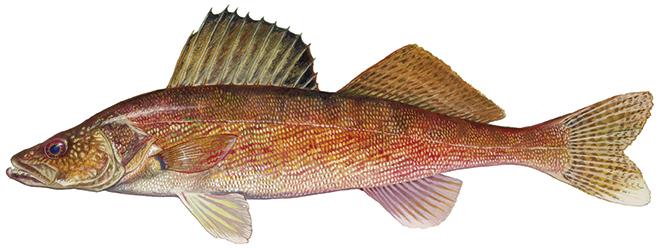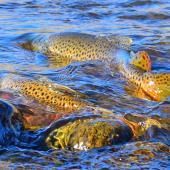Junior Varsity
Montana's prominent second-stringers.
Depending on where you go, some fish seem to be under every rock, even too abundant for the liking of some anglers. Here are two of Montana's overly common, lesser-known species, which can be every bit as appealing as their more popular counterparts—both on the end of a line and over a warm campfire.
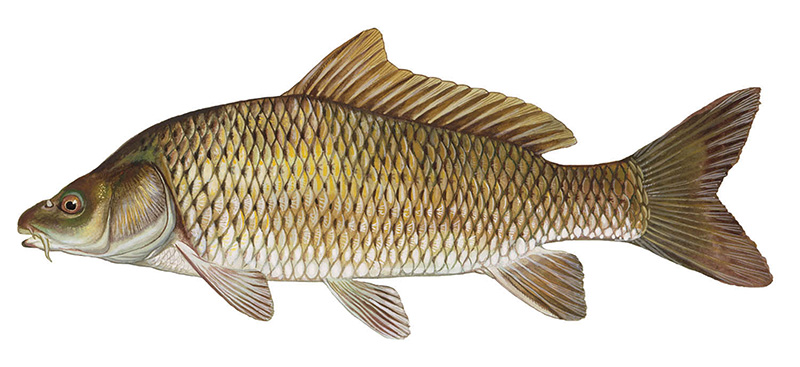
Common Carp
Stalwart and adaptive, carp are a widespread non-native species east of the Divide. Carp frequent warm shallows in lakes and backwaters in larger rivers, and generally prefer weedy areas. While this unglamorous omnivore gets little credence with sport fishermen, they are great fun to wrestle in on light tackle and are easy to find. Beware: carp grow to large sizes, fight hard, and don’t wear out easily. If you’re in for a tango, set your drag light.
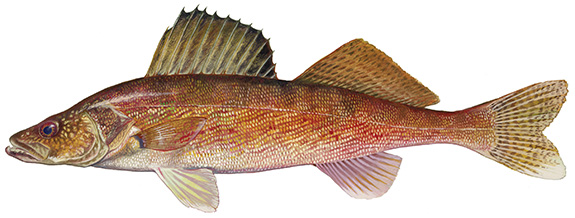
Walleye
While there are conflicting theories as to whether walleye are indigenous to Montana, at present, they are classified as a non-native species. Nevertheless, this aggressive game fish is highly sought-after for sport and table fare. Favoring large, deep lakes, walleye migrate into feeder streams, seeking gravely riffles and rocky shallows to spawn. Walleye feed on aquatic invertebrates, and larger specimens prey on smaller fish. Because they swim at great depths, a good quality fish-finder is invaluable, and a slow-trolled nightcrawler on a worm harness is a productive bait combination.
Montana’s fame as a trout state is not unwarranted, with rivers like the Yellowstone, Gallatin, Madison, Missouri being the subject of numerous articles and films. All this press tends to lead to a popularizing of local waters, and can leave the average angler feeling crowded out. If time on the water and a quality angling experience are more important to you than a specific piscine quarry, a change in target may be in order: from trout to smallmouth bass. —Kurt Dehmer
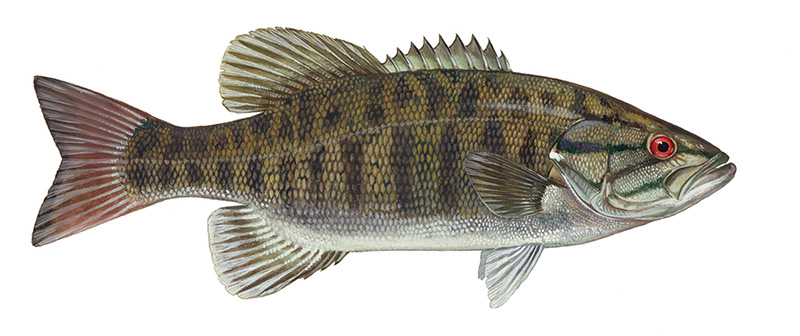
Bronze-Back Bonanza
Smallmouths, smallies, bronze-backs, or Micropterus dolomieu tend to thrive in stream and riverine habitats, but can also do well in specific types of lakes. Think of the smallies’ preferred living conditions as similar to that of brown trout, only the smallmouth can tolerate much higher water temperatures. To mamy, smallies are pound-for-pound the best-fighting game fish alive. In addition to having similar habitat preference, smallmouth have a remarkably similar diet to brown trout. This means that a trout angler switching to this species probably has all the flies, lures, or bait needed to catch them.
Location, Location, Location
While not native to Montana, smallmouth have been stocked in some lakes in the state since 1914. Specimens in excess of five pounds have been taken from both Fort Peck and the Tongue River. If river fishing is more your game, this species can be found in the Yellowstone downstream of Reed Point, and in the downstream sections of the Big Horn and Missouri rivers. Smallmouths have also been known to turn up in the tributaries in and around the Flathead drainage.
Target Time and Ammunition
The best time to focus on smallmouth is during spawning season, which in Montana means late May to early June, depending on water temps. Anything in excess of 60 degrees seems preferable. Rocky, gravelly shallows or outcrops should produce fish. Given smallies’ dietary affinity with brown trout, inline spinners sizes 1-3 in a variety of colors are a good bet, and don’t forget the crankbaits. For flies, big, dark streamers with a bit of flash are productive, as well as crayfish patterns. Smallmouth will also take live bait, with crawlers and leeches being the most common. Because of their reputation as brawlers, rods with a faster action are recommended.


